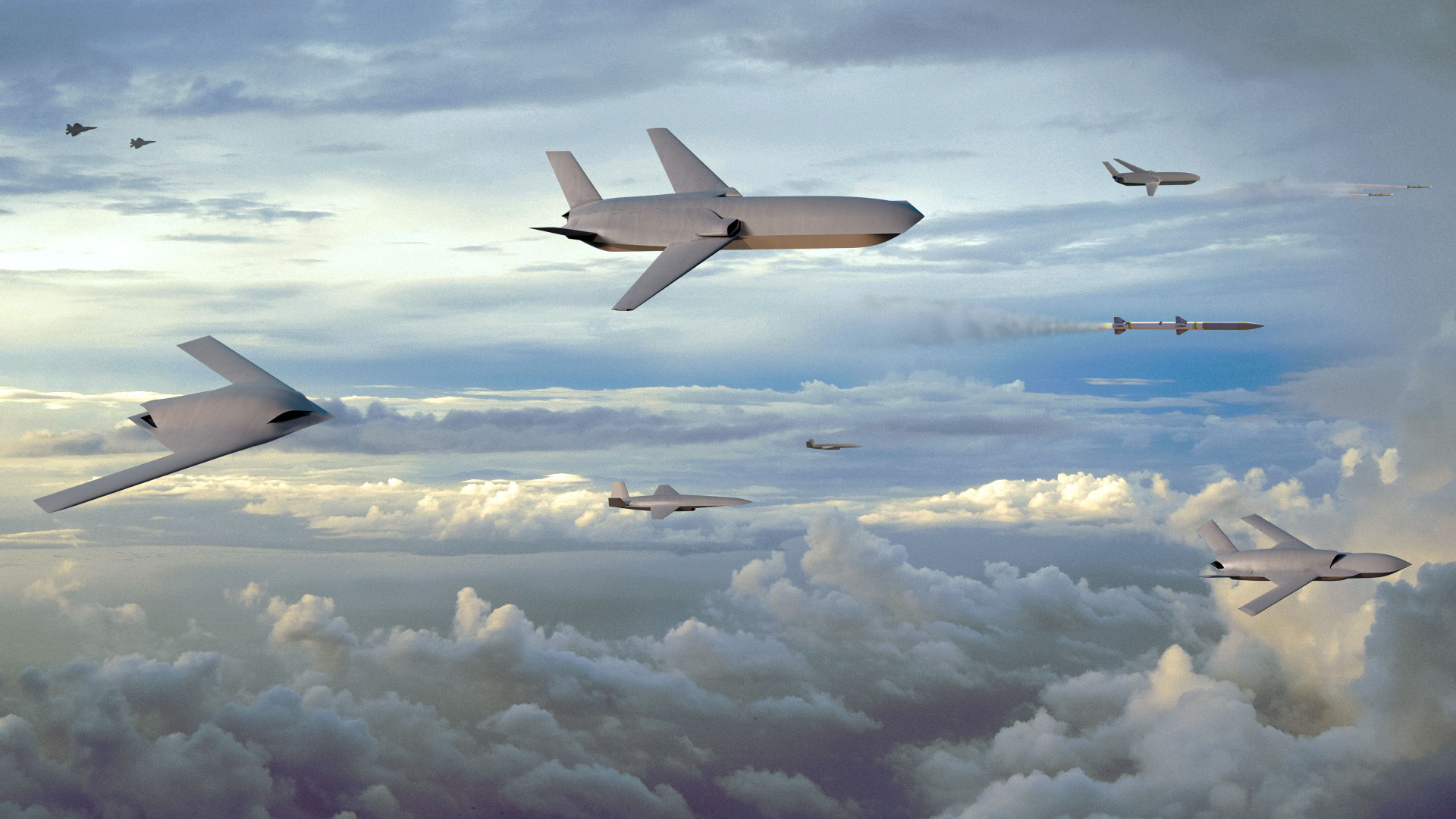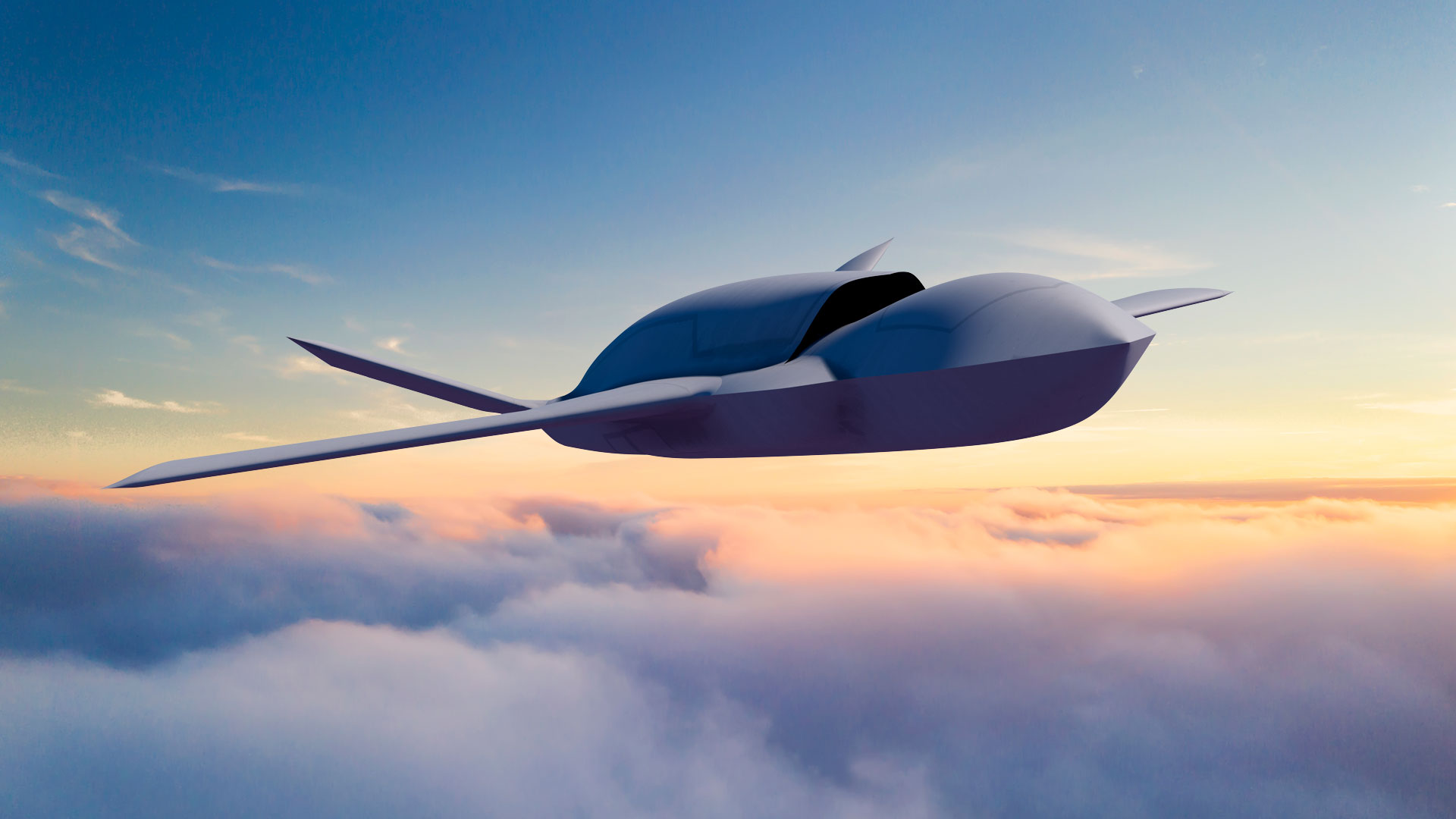UAV.com Staff Report
The U.S. Air Force has overflown the old limits of airpower orthodoxy. It needs a new approach – fast.
Potential adversaries are more sophisticated than they've ever been, with new high-quality fighters amassing in seriously challenging quantities. Although the United States and its allies hold a qualitative edge in terms of people and machines, the numbers game already is lost.
Today's system – in which the Air Force takes a top-performing physical and academic all-star, gives them years of training, and then seats her or him in the cockpit of a multimillion-dollar fighter produced by a decades-long multibillion-dollar Pentagon program – is maxed out.
America doesn't have the time or money to grow that kind of fighter force by the amount it needs.
This is the bad news: The moment has arrived at which the United States has no choice but to pursue a new type of airpower.
The good news is there's an answer: the Gambit Series.
Gambit, built by San Diego-based General Atomics Aeronautical Systems, Inc., is a line of low-cost, highly autonomous unmanned jets that augment the Air Force's fleet of fighters; bombers; intelligence, surveillance, and reconnaissance; and other mainstay aircraft. Fielding Gambit aircraft in quantity will allow the Air Force and its allies to field greater numbers of total aircraft – mass, in the military lexicon –against potential aggressors.
This mass evens the odds against a notional foe and makes every individual pilot and aircraft much more effective. Advanced technology means Gambit also allows the Air Force to conduct old missions in new ways, enabling new capabilities that it couldn't get via any other approach.
The Gambit Series

General Atomics describes Gambit as a family of four large unmanned aircraft. Unarmed Gambit 1 is built for intelligence, surveillance, and reconnaissance, and can fly for long hours searching big sections of airspace.
Gambit 2 has a similar configuration but sacrifices some endurance for its ability to carry air-to-air weapons. Gambit 3 is a high-fidelity adversary air trainer designed to help human pilots learn to fly with and against unmanned systems. Gambit 4 is a tailless flying wing reconnaissance aircraft designed to stand in close against hostile forces and monitor them without being detected.
Fast-forward a few years and here's how this line of aircraft will have revolutionized business in the Air Force: Pilots see and train against unmanned aggressors from their first few hops in the form of new programs that integrate Gambit 3. They also learn how to use unmanned wingmen to the greatest effect. So, they build familiarity and confidence from their earliest years of service.
Now picture a fighter pilot deployed with an expeditionary squadron to an area of strategic interest for the United States. Gambit 4 surveillance aircraft provide near-constant monitoring of hostile forces and early warning and cueing if potential threat aircraft take off. This allows the air component commander to launch an intercept package.
Taking off are a large group of Gambit 1 and Gambit 2 aircraft, which will fan across a wide box of airspace. The overlapping sensor fields of the aircraft mean that each can check what the other sees from a different aspect. This makes it very difficult for a low-observable threat aircraft to escape detection. Three or four or more of the Gambit aircraft concur they're seeing a hostile fighter.
What happens next depends on the mission. The aircraft might merely report to the Air Force what they've detected, deciding to make a transmission within their mesh network that would be very difficult for the adversary to jam or even detect. The aircraft might withdraw and pass the track to the human fighter pilot trailing the unmanned lead element in this air group. Or, if this encounter took place during an active conflict, Gambit 2 might be directed to open fire itself by a human commander working via manned-unmanned teaming.
Scale up this engagement, in terms of numbers of hostile aircraft, and Gambit helps the Air Force keep its edge. With this confidence about American technical and numerical capabilities, ideally the outcome would be to deter any conflict in the first place because everyone would be confident the United States would win.
If deterrence fails and crisis becomes conflict, using the Gambit Series means that the aircraft in the vanguard have no one on board placed in danger. Uninhabited systems let American and allied pilots and crews keep safely back until they can act with a decisive advantage.
Speed to Ramp
The Air Force still has a ways to go before it can mount an operation like this one, and the vision for joint, all-domain integrated warfare is larger than any single platform or company. But as American aerospace contractors work to meet the Air Force's advanced needs, GA-ASI and its partners say they're leading the way.
GA-ASI's MQ-20 Avenger remotely piloted aircraft has blazed the trail in proving out autonomous air combat techniques, integrating human and machine-flown aircraft, meshing with virtual systems, and more. And GA-ASI officials point out their earlier-model fleet of Predator series unmanned aircraft has recorded more than eight million flight hours, much of them in combat, building a huge trove of experience with operations and technology available to no other builder.
For Gambit, engineers have designed a highly common core structure for each aircraft. This works in the same way that an automaker might build a single cage and chassis that it then turns into different vehicles – a left turn at the end of the production line makes the structure into a family sedan; a right turn means it's going to become a luxury model.
This high producibility, combined with cutting-edge additive manufacturing techniques, means Gambit is positioned to begin assembly sooner than any other system and can scale rapidly to the high quantities the Air Force needs. America mustn't only keep its technological edge in airpower. It must preserve it while fielding a large number of new autonomous platforms before any competitor can catch up. The U.S. must move fast and move first.
For all these reasons – technical superiority, high commonality, and superior producibility, which also mean lower relative cost and a quicker speed to deployment – GA-ASI says Gambit is the best move for the Air Force and the nation.
